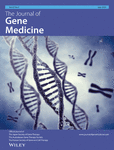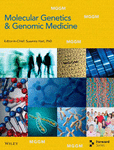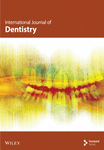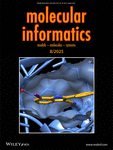Journal list menu
Export Citations
Download PDFs
Editorial
Open Access
oa
Rehabilitation and Improvement of the Postural Function
- First Published: 12 November 2015
Review Article
Open Access
oa
Techniques and Methods for Testing the Postural Function in Healthy and Pathological Subjects
- First Published: 12 November 2015
Research Article
Open Access
oa
Effects of Fourteen-Day Bed Rest on Trunk Stabilizing Functions in Aging Adults
- First Published: 25 October 2015
Clinical Study
Open Access
oa
The Impact of a Vestibular-Stimulating Exercise Regime on Postural Stability in People with Visual Impairment
- First Published: 25 October 2015
Research Article
Open Access
oa
Evaluation of Myoelectric Activity of Paraspinal Muscles in Adolescents with Idiopathic Scoliosis during Habitual Standing and Sitting
- First Published: 25 October 2015
Research Article
Open Access
oa
Effectiveness and Limitations of Unsupervised Home-Based Balance Rehabilitation with Nintendo Wii in People with Multiple Sclerosis
- First Published: 25 October 2015
Research Article
Open Access
oa
Crossover versus Stabilometric Platform for the Treatment of Balance Dysfunction in Parkinson’s Disease: A Randomized Study
- First Published: 25 October 2015
Clinical Study
Open Access
oa
Effects of Unilateral Cochlear Implantation on Balance Control and Sensory Organization in Adult Patients with Profound Hearing Loss
- First Published: 25 October 2015
Clinical Study
Open Access
oa
Recovery of Posture Stability at Different Foot Placements in Patients Who Underwent Minimally Invasive Total Hip Arthroplasty: A One-Year Follow-Up Study
- First Published: 25 October 2015
Research Article
Open Access
oa
Mobility and Balance and Their Correlation with Physiological Factors in Elderly with Different Foot Postures
- First Published: 25 October 2015
Review Article
Open Access
oa
Mobile Phone-Based Joint Angle Measurement for Functional Assessment and Rehabilitation of Proprioception
- First Published: 25 October 2015
Clinical Study
Open Access
oa
Effect of Workplace- versus Home-Based Physical Exercise on Muscle Response to Sudden Trunk Perturbation among Healthcare Workers: A Cluster Randomized Controlled Trial
- First Published: 25 October 2015
Review Article
Open Access
oa
The Role of Ankle Proprioception for Balance Control in relation to Sports Performance and Injury
- First Published: 25 October 2015
Research Article
Open Access
oa
Correlation between Trunk Posture and Neck Reposition Sense among Subjects with Forward Head Neck Postures
- First Published: 25 October 2015
Research Article
Open Access
oa
Relationships of Balance, Gait Performance, and Functional Outcome in Chronic Stroke Patients: A Comparison of Left and Right Lesions
- First Published: 25 October 2015
Review Article
Open Access
oa
Effects of Exercise on Spinal Deformities and Quality of Life in Patients with Adolescent Idiopathic Scoliosis
- First Published: 25 October 2015







